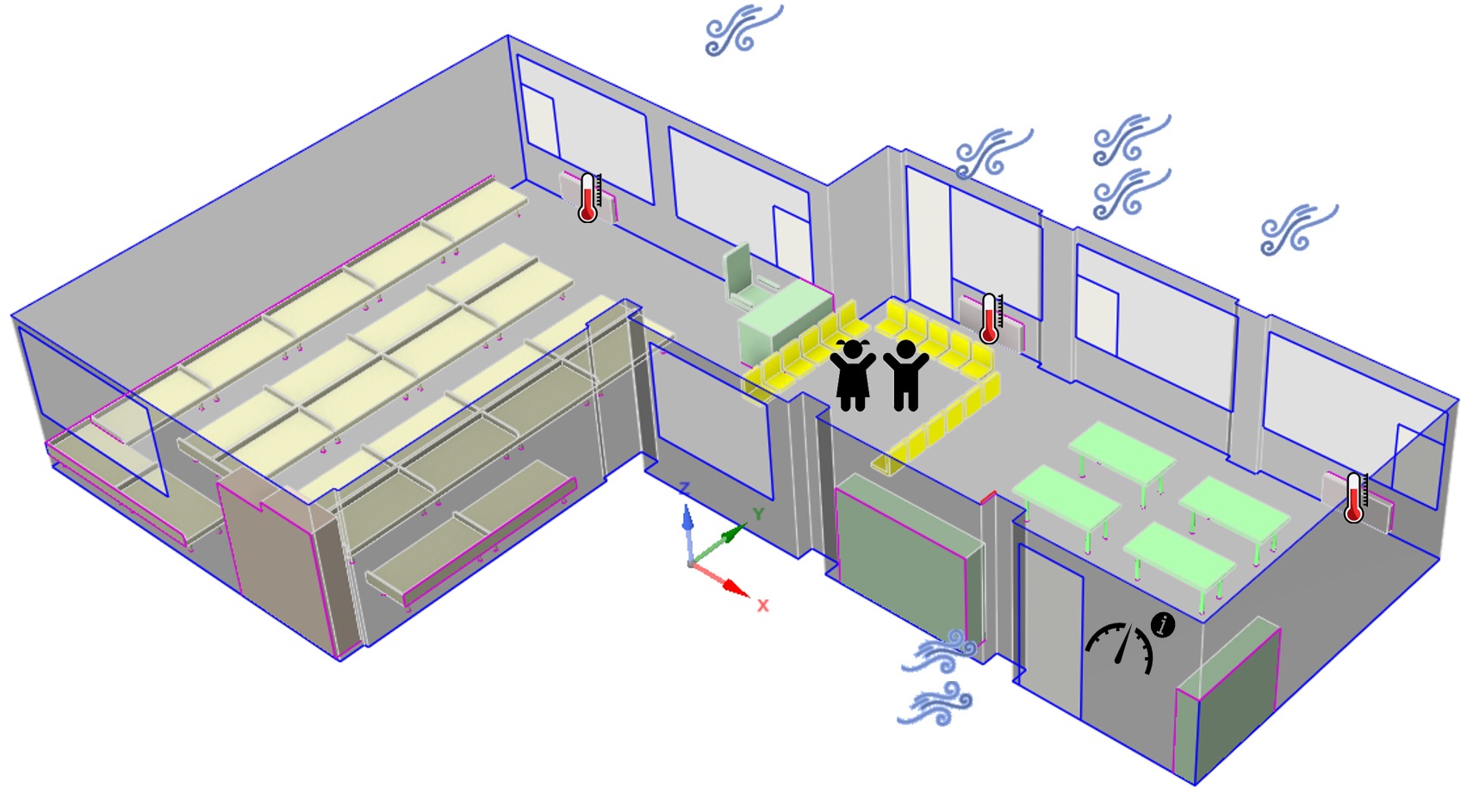
Indoor Air Quality
Indoor air quality and thermal comfort are two factors that affect occupants’ health, performance, and overall well-being. The average human spends most of their life in an indoor environment - at home, at school, in the office, and at various public or social venues. Inside each one of these premises, different contaminants, such as gases and particulate matter, are present. Studies show the inherent correlation between the presence of these harmful substances and various cardiovascular and respiratory problems, cancer, brain development impairment in children, allergies, and other health issues leading to a reduction of the general life expectancy of the occupants.
With the help of Computational Fluid Dynamics (CFD) analysis, Indoor air quality and thermal comfort and thermal comfort are modelled, monitored, analyzed and predicted, so that suitable control measures can be taken in due time. Furthermore, the overall building design, ventilation and heating effectiveness are assessed and optimized through different what-if scenarios, leading to reduced energy consumption and cost savings.
CFD is adopted as the main approach for this research. Currently, it is the most widely used and established methodology in the field of indoor air quality, thermal comfort, and ventilation studies. It allows capturing all the relevant features and specifics of the geometry, heating, ventilation and air conditioning (HVAC) systems (if present), outdoor conditions, pollution sources, occupants, and their activities. The results allow the comprehensive visualization of the indoor environment.
The resulting studies offer detailed information about the indoor environment behaviour under different scenarios, leading to:
- A safe and nurturing environment for the occupants, boosted productivity, and increased health and personal well-being;
- Optimized HVAC systems;
- Optimized building design and construction, effective operation, and maintenance practices;
- Reduced environmental footprint of the building and its occupants.

